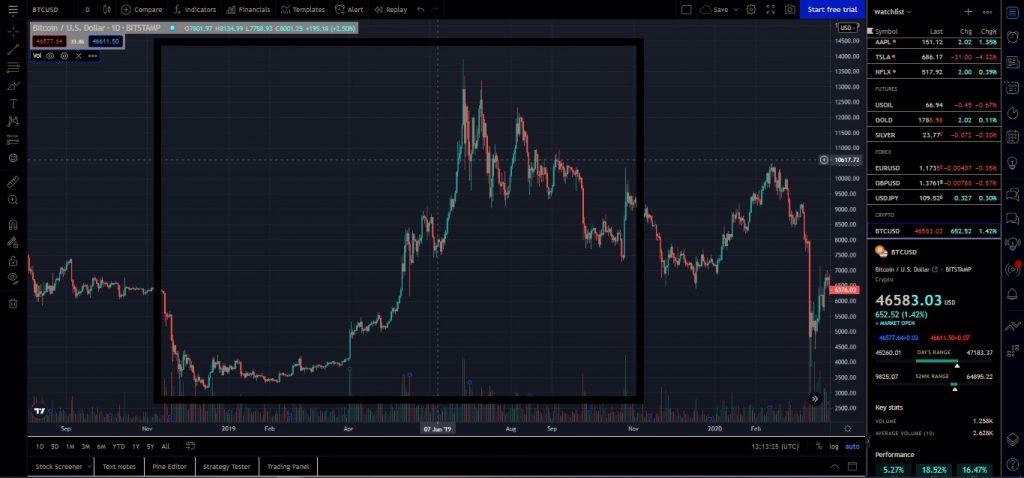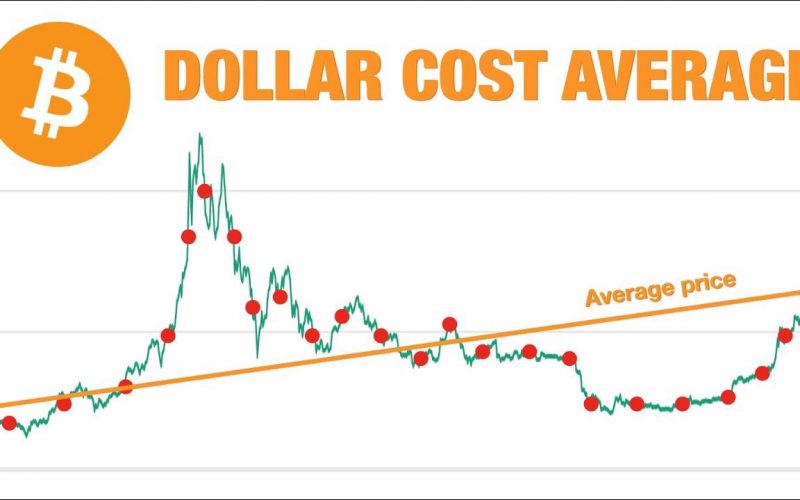When it comes to investing, there are numerous strategies to choose from, each with differing degrees of risk. Dollar-cost averaging is one of such strategies that aim to create wealth over time if done rightly. This is an investment technique in which asset acquisitions are made on a regular basis, forestalling the requirement of market timing. Does this sound perplexing? Continue reading to learn more about the dollar-cost averaging strategy, how to use it in your crypto investing, how profitable it is, and more importantly, the drawbacks.
What Is Dollar-Cost Averaging?
DCA (dollar-cost averaging) is a less-measured strategy for investing that helps individuals avoid making emotional decisions. The investor attempts to reduce the impact of price volatility by spreading orders out across predetermined time intervals. Instead of investing a flat sum in a certain asset class, the investor opts to invest a specified amount weekly, monthly, or bimonthly. This is done regardless of price fluctuations.
Consider DCA as a way to navigate a tumultuous market without having to guess where the optimum entry point is. And because the capital is spread out across certain intervals, the approach tends to balance out your buy prices over time. This is far superior to investing a large sum at a high price.
In other words, dollar-cost averaging is an appropriate investment strategy for beginners or those who do not want to be bothered with the technical aspects of market analysis.
Basically, the idea is to keep to an investing cycle in which a specific amount is invested in an asset on a regular basis. With short-term investment techniques, there is no place for doubt, greed, or fear. It’s also worth noting that in a bear/bad market, DCA is more beneficial. While most investors are scared to buy because they are worried about being too early or too late to the game, your dollar-cost averaging strategy would give you a foundation for buying the drop.
Now that you understand the basics of dollar-cost averaging, let’s look at how this method might work in different investment settings.
How Does It Work?
Let’s create a picture of all the possible outcomes of a lump sum investment strategy before we get into the practicalities. Imagine you decide to invest a lump sum of $1,000 in an asset with a $50 per share value. As a result, you can buy 20 shares in one transaction. But then, what happens if you decide to sell at a price of $40, $60, or $80?
| Sell Prices | Profit |
| $40 | -$200 |
| $60 | $200 |
| $80 | $600 |
As seen in the table above, the lump sum method works best when an investor has identified the ideal moment to enter a market — which also means that you must choose the proper time to sell. Let’s compare this baseline to the dollar-cost-averaging strategy’s prospective outcomes.
#1. In a Bear Market
Because dollar-cost averaging is a continual buy strategy, you’d have to divide your $1,000 investment across several purchases. For example, you may buy an asset over the space of four months using a dollar-cost-averaging strategy. To put it another way, you set away $250 each month. Perhaps the price drops steadily, with prices of $50, $35, $30, and $25 at each predetermined time interval. The $1,000 investment capital has accumulated 30.4 shares in this case. So, if you choose to sell at the same sell prices, how does this strategy affect your profit?
| Sell Prices | Profit |
| $40 | $216 |
| $60 | $824 |
| $80 | $1,432 |
Your money grows quicker since you were able to purchase more shares over time. Even when the lump sum plan loses money, the dollar-cost averaging strategy makes money.
#2. In a Bull Market
While dollar-cost averaging works well in a bear market, it isn’t as successful in a bull one. When the value of your purchase increases over time, the number of shares you have accrued will be less than the number of shares you would have purchased in a lump payment. For example, you can split $1,000 evenly between four purchases at $50, $65, $70, and $80 per share. You will end up accumulating 15.5 shares if you follow this purchasing strategy. What effect does this have on your bottom line?
| Sell Prices | Profit |
| $40 | -$380 |
| $60 | -$70 |
| $80 | $240 |
As you can see from the table above, the profitability of your investment decreases significantly.
#3. In a Flat Market
The third case is when the asset’s price remains relatively steady over time. You won’t notice the effects of dollar-cost averaging here. For example, at each $250 investment interval, the asset’s purchase price goes laterally, posting $50, $55, $40, and $60. In the end, you’d have 18.9 shares, which is a little closer to the 20 shares purchased for $1,000 in a lump amount at $50 each.
Read Also: Active Investing vs. Passive: Understanding Why You Need Both (+Detailed Guide)
Is Dollar-Cost Averaging a Good Way to Invest in Crypto?
As you’ve probably noticed, the DCA method is appropriate for any volatile asset class. And because cryptocurrency has the highest volatility of any asset class, it is difficult to predict price swings. This is why, in order to balance out your buy prices and take advantage of market drops, you may need to use the dollar-cost-averaging approach.
However, it’s vital to avoid suffering big losses during a bull market. It’s worth noting that dollar-cost averaging is more effective when the price of digital assets is falling.
You could use a brokerage service that offers periodic purchase options to use dollar-cost averaging as a crypto investment strategy. You might also manually set up a buying plan by selecting a preset amount to invest at predetermined times.
In practice, How Profitable is DCA?
The Dollar Cost Averaging crypto strategy sounds pleasant and straightforward in theory, but how effective is it in real-time investing? Let’s see how well DCA would have worked as an investment plan for Jim if he had started it exactly one year ago, using real Bitcoin prices. To do so, we’ll assume Jim began investing $100 in Bitcoin every month on the first of the month exactly one year ago.

Jim would have received 0.18992931 BTC in return if he had invested his $1,200 in Bitcoin all at once on November 1, 2018, equating to $1576.36 on October 1, 2019. As a result, he would have made a 31.36 percent profit. However, utilizing Dollar Cost Averaging as an investment technique, Jim was able to attain a significantly superior performance of 51.15 percent.
What Are the Advantages and Drawbacks of Dollar-Cost Averaging?
Certainly, there are a couple of drawbacks with this method regardless of the advantages we’ve mentioned in-between lines. Nevertheless, let’s take a quick look at both.
Advantages of DCA
As we can see from the examples above, dollar-cost averaging increases investment profitability by taking advantage of price drops. Other benefits include the fact that it;
- assists in avoiding risks associated with market timing errors;
- eliminates investment decisions based on emotions;
- is appropriate for people looking to make long-term investments.
Drawbacks of DCA
For starters, with a dollar-cost averaging system, you’ll pay higher trading costs because trading platforms charge a fee each time you make a transaction. The good news, however, is that because DCA is a long-term strategy, costs should ideally become insignificant in comparison to possible earnings over two, five, or ten years and beyond.
But then the most significant disadvantage of DCA is the risk of missing out on a large gain that you could have made if you had invested in a lump sum when the market was down. However, any large windfall profits require accurate market timing, and even skilled investors hardly always forecast intraday, or even weekly, stock or market changes. DCA is a potentially safer technique to profit from large market drops.
Another disadvantage is that you may buy after a sharp increase in asset prices only to see a subsequent negative correction. Buying assets at every stage, whether stable, declining, or appreciating, is often part of a DCA strategy over time. A DCA strategy, when used regularly, tends to minimize risk and perform better over time.
Conclusion
For beginners and less technically inclined investors, dollar-cost averaging is a powerful investment strategy, especially when investing long-term in a volatile market like crypto. As stated in this article, there is a low chance of mistiming the market, and the dangers associated with emotion-driven investment decisions are minimized.
Does Dollar Cost Averaging Really Work?
Dollar-cost averaging outperformed lump-sum investing about a third of the time. Because it’s hard to forecast future market dips, dollar cost averaging provides steady returns while lowering the chance of falling into one of the 33.33 percent of lump-sum investing failures. So, yes, dollar-cost averaging works, B=but then that doesn’t make it foolproof.
Is Dollar Cost Averaging the Best?
Whether dollar-cost averaging is the best or not is relative. In other words, for some investors, this is the best strategy for others, not so much. But generally, considering that there are tons of investors/traders out there without a strategy, dollar-cost averaging is one of the best ways to build one. On the other hand, a foolproof strategy should be able to help you make informed decisions in any kind of market—bears or bulls; something the DCA strategy lacks.
Is DCA a Good Strategy?
DCA is a pretty good strategy for tons of investors out there that fly blindly into the market. Although it works best in bear markets, it’s better than nothing.
Why Dollar-Cost Averaging Is a Bad Idea?
The fact that the market tends to rise over time is a drawback of dollar-cost averaging. This indicates that investing a large sum of money upfront will likely outperform investing lesser amounts over time. And because of the market’s upward trend, the lump sum will deliver a superior long-term return.
What Are the 2 Drawbacks to Dollar-Cost Averaging?
Dollar-cost averaging has some downsides, like missing out on higher long-term returns and not being able to solve all other investing risks.






